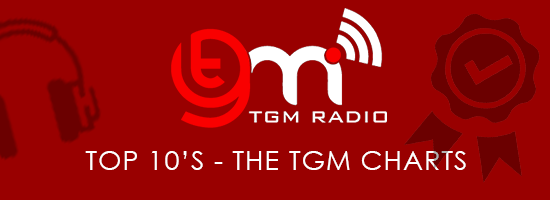the story of a pop classic
January 24th, 202110 years ago today (January 24), Adele, who reportedly has new music on the way, released her second album ‘21’. Its straight-forward, to-the-point title – named after the age at which she recorded it – was indicative of what lay inside. Featuring some of the London singer’s best-loved hits (‘Someone Like You’, ‘Rolling in the Deep’ ‘Set Fire to the Rain’ and ‘Rumour Has It’ among them), the record took the cathartic essence of pop music, and in some ways, took things back to basics by centring Adele’s unmistakable powerhouse vocal among timeless, vintage-sounding songs about heartbreak.
A decade later, it’s one of the most successful records of all time, propelled by the massive single ‘Someone Like You’, a plaintive break-up piano ballad that aches with loneliness. And, bizarrely, the album may not exist today without ‘00s indie musician Jack Peñate gently prodding Adele to check her Myspace inbox.
Back in 2006, A&R scout Nick Huggett was working at XL Recordings when he heard Adele’s early demos on Myspace back – at the time, it was a crucial place for finding new talent, with both Lily Allen and Arctic Monkeys breaking through on the platform. Huggett was immediately struck by the sheer potency of her voice, which cut through the muffled and grainy home recording. “I remember it very distinctly because the hairs on the back of my neck stood up,” he recalls. “It was the voice and emotion that caught my attention; I felt it in a way that you don’t very often”.
Huggett reached out to Adele a few times, and didn’t hear back – in the end, he asked fellow London artist Jack Peñate to vouch for him, and Adele – accompanied by her guitarist Ben Thomas – eventually agreed to meet with XL. Though she would ultimately sign to the indie label, history almost took a completely different path; the young singer had been offered a place at Liverpool Institute for Performing Arts, and seriously debated going there instead.
“She was asking me what she should do,” representers Huggett. “I said, ‘I can’t tell you what to do.’ Looking back now, you might say of course she should’ve gone for music, but at the time, that would’ve been a hard thing for me to say to an 18-year-old. You don’t want to be the person to fuck someone’s life up. It was a good lesson for me.”
As things happened, Adele chose XL Recordings over the performing arts university, and quickly became a regular fixture in the label’s Ladbroke Grove offices while also working on what would later become her debut album. “She would come and hang out at the office because she was a bit bored,” Huggett says. “One day she came in to stuff envelopes, which looking back, just seems so strange.”
With her breakthrough debut album ‘19’ in 2008, Adele bagged her first number one record, and became known for hits like ‘Chasing Pavements’, ‘Hometown Glory, and her Bob Dylan cover ‘Make You Feel My Love’ – and as work commenced on its follow-up, ‘21’ she juggled studio sessions with shifts at the London record store and label Rough Trade.
“She went to do some work experience, and she asked if she could have a day off,” Huggett says. “She didn’t really explain why, but it transpired that she had a gig at the Hollywood Bowl with Etta James! She played a lot of stuff down… [Rough Trade staff] only found out a few months later.”
In hindsight, it’s an anecdote that feels typical from an artist who feels distinctly out of step with polished, manicured, heavily media-trained pop stars elsewhere – most interviews with Adele seem to feature a constant stream of heartily delivered expletives and highly colourful storytelling. A week before ‘21’s release, the singer memorably kicked off an interview with The Observer by enthusiastically nattering on about colonic ailments. She hasn’t really changed in that regard, either. Headlining Glastonbury five years later, Adele’s easy presence on the whopping Pyramid Stage somehow felt friendly and familiar – between songs, she chatted away with Worthy Farm in the manner you might riff with a mate over tinnies in the park.
For years, the star had been reluctant to take on the enormous booking, festival organiser Emily Eavis tells NME: “I knew she could headline, that was pretty clear from very early on. The actual challenge was getting Adele to agree! The clincher was when we watched Kanye together [in 2015]. It was just after he walked out to do that gig that I asked her to headline the following year, and looking out into the crowd and feeling that atmosphere I think she just had to say, ‘Yes’.
“As ever, some people didn’t see her as being a ‘Glastonbury headliner’ for whatever reason, but she ruled it, as we knew she would, and her voice, her songs and her personality won everyone over. She is a truly great artist and it was a very special night for everyone in the field and beyond.”
Though ‘19’ secured Adele’s spot in the charts, it was undoubtedly ‘21’ that turned Adele into someone who continually dominated them in years to come – and established her as the kind of artist capable of headlining a festival like Glastonbury. The true extent of Adele’s live chops perhaps became apparent when she stole the show at the 2011 BRIT awards, a month after ‘21’s release.
London singer Ella Eyre, who was in the audience, tells NME: “I remember being in the heavens of the O2 Arena watching Adele sing ‘Someone Like You’ and balling my eyes out whilst filming it on my Nokia 3220. She had the whole room in her hands during that performance. I remember so vividly saying to myself, ‘Wow, I wanna be able to touch people with my voice like that one day’.”
Now the best selling album of the 21st Century – which in 2012 became the fourth best selling album of all time – ’21’ featured a varied group of collaborators and producers including Rick Rubin, OneRepublic vocalist and go-to pop songwriter Ryan Tedder, and Adele’s ‘19’ collaborator Jim Abbiss, who also produced Arctic Monkeys’ debut ‘Whatever People Say I Am, That’s What I’m Not’.
At the time, producer and songwriter Paul Epworth was quickly making a name for himself as one of indie’s most sought-after producers, having produced Bloc Party’s 2005 debut ‘Silent Alarm’ and a sizeable chunk of Florence + The Machine’s first record ‘Lungs’. On paper, he didn’t seem like the first logical fit for a pop artist like Adele – but in a room together, the pair clicked immediately. While Epworth was working on Jack Peñate’s second album ‘Everything is New,’ Peñate invited her into the studio to sing backing vocals on his song ‘Every Glance’.
“She showed up at this tiny little studio up in Eastcote, Walter’s Workshops on [London’s] Kensal Road – it was about the size of a garden shed,” Epworth says before correcting himself with a laugh: “Well – actually, it is a shed with a felt roof! had all sorts of mad ideas, and she was really up for it – she did some wild and crazy voodoo backing vocals. We had a laugh, and then she left.
“She ruled Glastonbury. Adele is a truly great artist” – Glastonbury boss Emily Eavis
“About three months later it was my birthday, and I think I was really drunk. [Adele’s manager] Jonathan [Dickens] was there and I said, ‘Listen mate, Adele’s fun isn’t she, I’d love to do something with her’. A couple of months later I got a phone call, she came to the studio and within an hour I think we’d written most of ‘Rolling in the Deep’.” That same week Epworth and Adele also wrote the bittersweet ballad ‘He Won’t Go’ and ‘I’ll Be Waiting’, which channelled Memphis soul and crisp, J Dilla-inspired drums.
It’s perhaps the album’s stomping opener, ‘Rolling in the Deep’ where Adele’s talent for bringing together timeless sounds hits hardest – Adele’s juggernaut vocals belted atop distinct influences plucked from Southern blues and gospel. In part she had been inspired by the tunes her tour bus driver blasted out while driving around the US. Huggett believes that it’s ‘21’s lack of musical elitism that elevated it into a classic pop record. “She listened to Celine Dion and the Spice Girls,” he says, “but she also loved Sam Cooke, Ella Fitzgerald, and contemporary London stuff from people like Kid Harpoon.”
Paul Epworth representers exactly how ‘Rolling In The Deep’ came to be. “I sat there playing around on a piano for half an hour trying to noodle and tease a few ideas out,” he says, “and she was very polite and sat there for long enough before saying, ‘Not feeling any of this’. She went, I’ve got this idea, [singing] “There’s a fire…”, which became the song’s immortal opening line. “I grabbed an acoustic guitar and we rattled out some chords. She’d obviously had this idea for some time – Adele is responsible for her sound entirely.”
That same day, Adele and Epworth recorded the raw vocal demo for ‘Rolling in the Deep’ – and ultimately, that same demo ended up on the final album instead of a more polished re-recording. “I think there’s something about the rawness of that first vocal take with all its pain and feeling,” Epworth says. “It’s a cliche, but it’s like capturing a band doing their first take. It’s spontaneous, raw and it might be rough around the edges, but the more you try to polish it up, the more personality it loses.
“As soon as you make music with her, you know how astute she is in terms of knowing where she thrives. Actually, I think it was [XL’s] Richard Russell who said that she thrives in darkness. That’s the duality she has: she makes these big beautiful songs which really connect with people and feel so full of love, but her best stuff also comes from pain.”
Indie-pop artist Tom Grennan, who covered ‘Rolling in the Deep’ in a Facebook live last summer, agrees. “There’s this blues and soul gravel to her voice – and there’s pain in it, too. As a whole, [21] is so vulnerable and hard-hitting at the same time. I remember I was on a family holiday just after it came out, and I was missing home loads – at the time I had a girlfriend, but we were arguing a lot when I was away.” Then 16, Grennan was in the angsty clutches of heartbreak and, he says, “it hit home when I was hurting too. Young love, man! Adele’s just real – she’s one of us.”
“There’s this blues and soul gravel to her voice – and there’s pain in it, too” – Tom Grennan
“It’s her realness,” concurs Ella Henderson, who first rose to prominence on The X Factor and later collaborated with ‘21’ producer Ryan Tedder on her breakthrough single ‘Ghost’. During Henderson’s time on the show, Adele publicly backed her, which meant a lot to a young singer trying to navigate the immense pressure of suddenly being in the spotlight. Adele’s approach to music has stayed firmly in mind ever since, she explains.
“Whenever I get too caught up in music, she’s someone I think about,” Henderson says. “If you bring it back to ‘Someone Like You’, which was just her and [producer and co-writer] Dan Wilson sat in a room – a song like that can transcend globally. Adele could sing ‘21’ with nothing but a piano player and every single one would still hit you. She brings everything back to the song. It’s just a magic album. I will always turn to songs like ‘Love Song’ and ‘One and Only’ – they feel very nostalgic, even though they’re sung by a singer in this decade. I can remember the first time I heard ‘Rolling in the Deep’ and the drum kick coming in – it sounds so earthy and organic. It comes from somewhere real, and believable.
“So many artists on the radio at that time felt so out of reach, and for me she’s up there with those artists – but she also feels like could be your mate. That’s what has always been different about Adele – she feels approachable.
Epworth says that this point is key to the success of ‘21’. “Before her and Amy Winehouse, a lot of British pop stars were slightly more manicured and less relatable,” he says, explaining that the record shifted the culture. XL’s Nick Huggett agrees: “Adele’s taken her lead from Amy Winehouse to an extent and surpassed what Amy was able to achieve commercially, and that led to this whole idea of the British underdog becoming a global pop star.
“There’s a real lack of snobbery about Adele’s music,” he points out. “There’s something very timeless about the songs on ‘21’. They could be from any time period in music, really – it’s so classic in a way that stands the test of time.”
Disclaimer/Note: TGM Radio’s latest news posts are a collection of curated and aggregated, fresh content from the best news sources across the globe.





